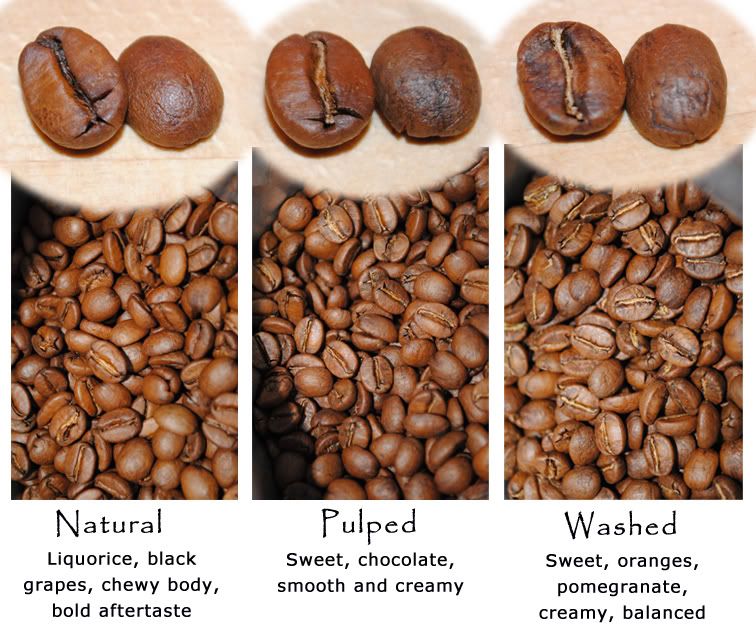I've been reading how dry processing typically results in beans full of body, whereas wet processing diminishes body and gives a desirable acidity. Now I'd thought that when blending beans, particular regions were chosen for adding body, brightness etc due to differing agricultural and environmental conditions in each region. But now theres an implication that you could take the same cherries and, say, dry process 60% to give a base and wet process 40% to offer some bright, cleanness to the blend. Hence, regions would not matter... just varietal and processing method.
If there were some truth in this, and large-scale bean importers began sourcing beans differently, it might help overcome bean price rises, since the governments of some countries (eg Brazil) are currently deliberately keeping prices high by not incentivising increased production. If buyers like Mercanta switched region, but could still get the same bean characteristics, this sort of behaviour would, hypothetically, stop.
This led to some great responses from forum members, including Paul from Hands On Coffee (roasters) who mentioned what he termed the 'hybrid' processing method, somewhere between wet and dry.
This led to Fran (someone who I find to be a very clued up contributor) pointing me to Has Bean's Finca Argentina tasting pack which includes the same bean processed three ways, dry (natural), wet (washed), and pulped... the 'hybrid' method Paul referred to. I eagerly ordered some.
There's a visible difference between the three bags of beans.
- The Natural looks really smooth... almost moisturised. It looks kinda 'young'.
- The Pulped has clearly had more done to it during processing. It is more mottled, slightly cracked, and there are areas of darkness appearing on the beans. On the other hand, the crease line is consistently lighter.
- The Washed looks like it's been through the ringer! The beans look older (I know they are not! This is not a criticism of the beans or the roast!!). Much more wrinkled with dark mottling - all of which I assume is due to the more complex process that washed beans undergoe.
You can really see how Pulped is somewhere in-between.
This is all interesting to me because looking at them I'd expect to like the Naturals more, but the Washed method is considered to produce a better bean (according to what I've read). Can't wait to taste them in a French Press.... and then hopefully try blending them in different proportions for espresso.
(The cup profiles below are copied from the HasBean bags)
 |
| CLICK TO ENLARGE. YOU REALLY NEED A CLOSE UP TO SEE THE DIFFERENCES |
No comments:
Post a Comment